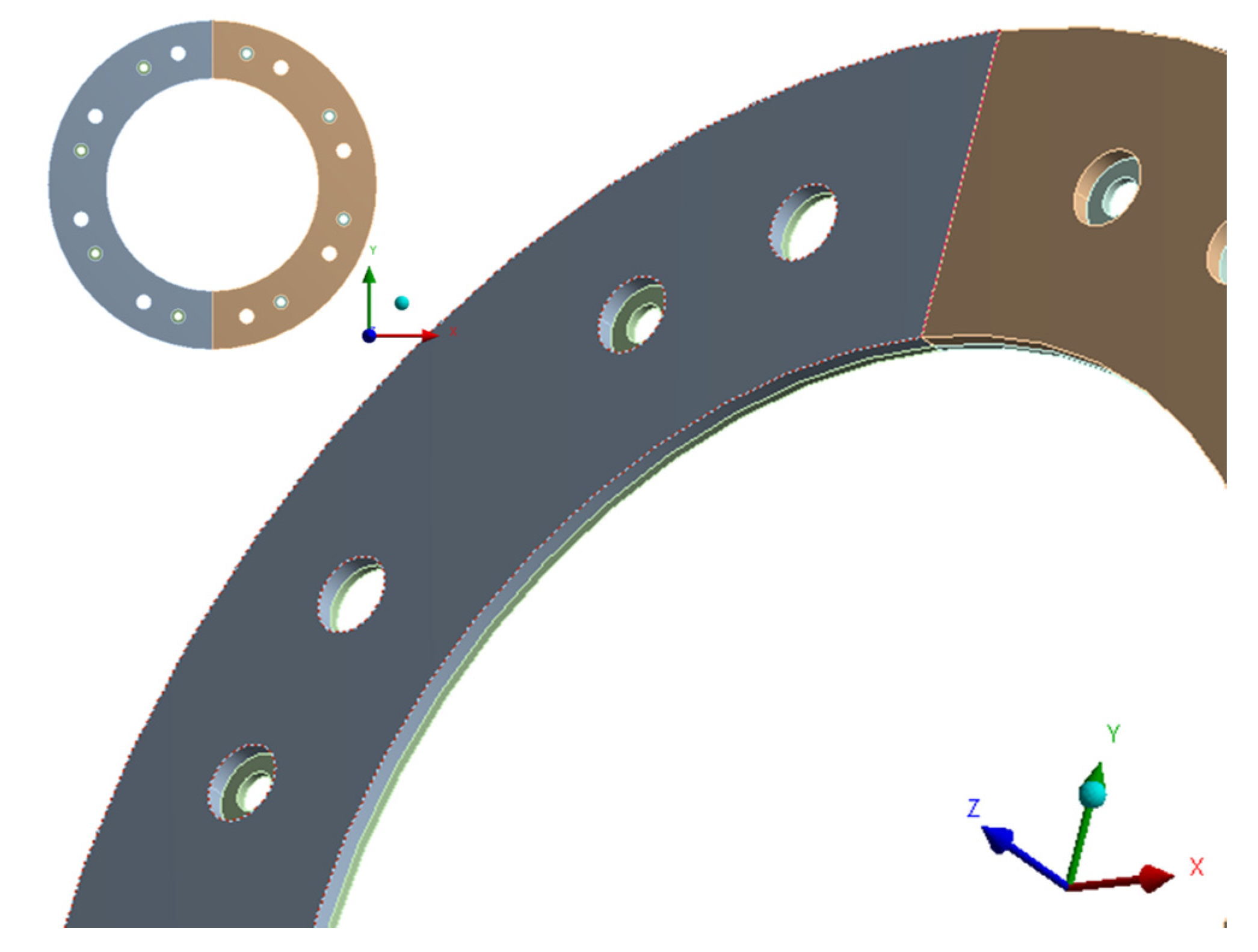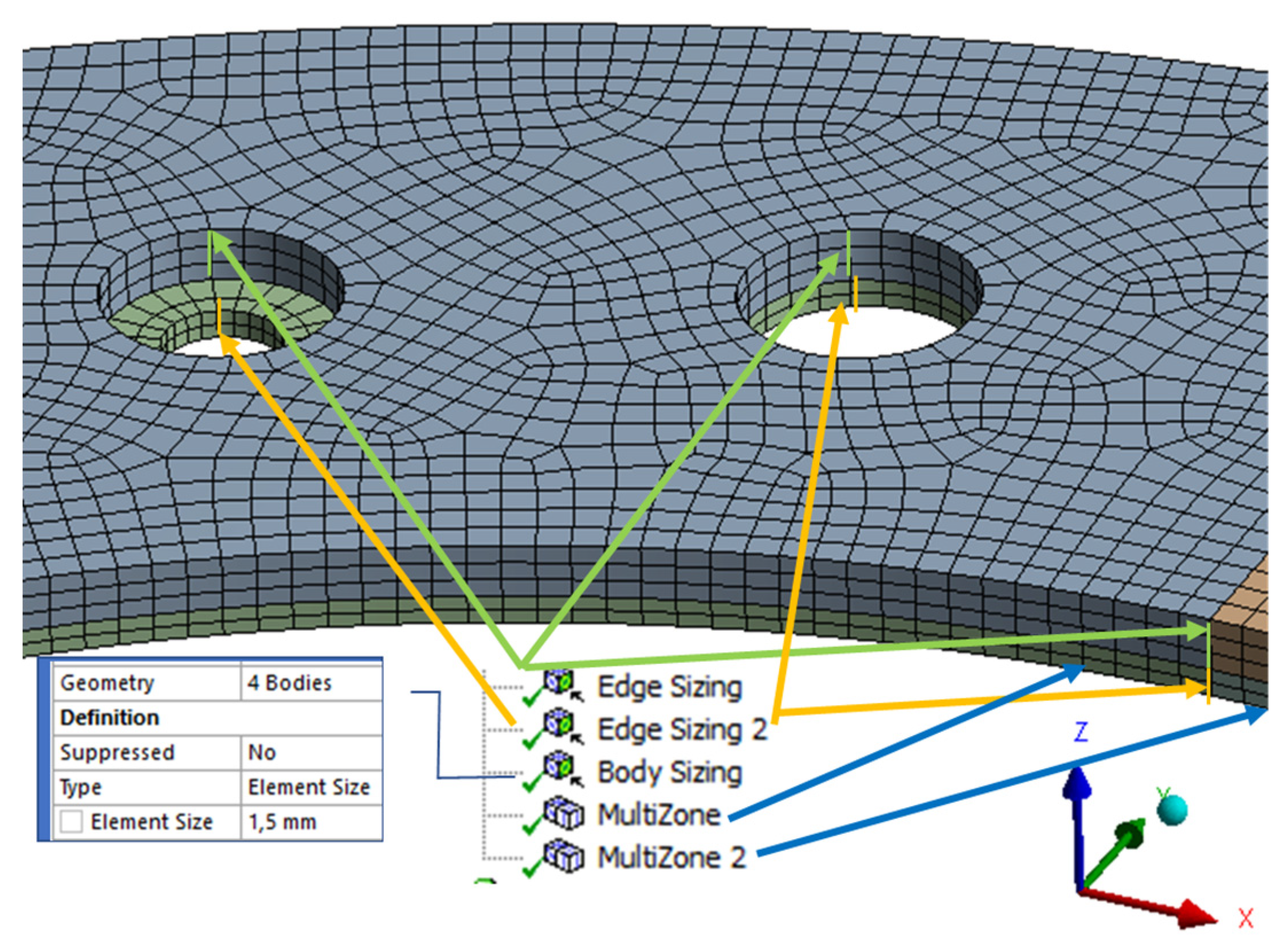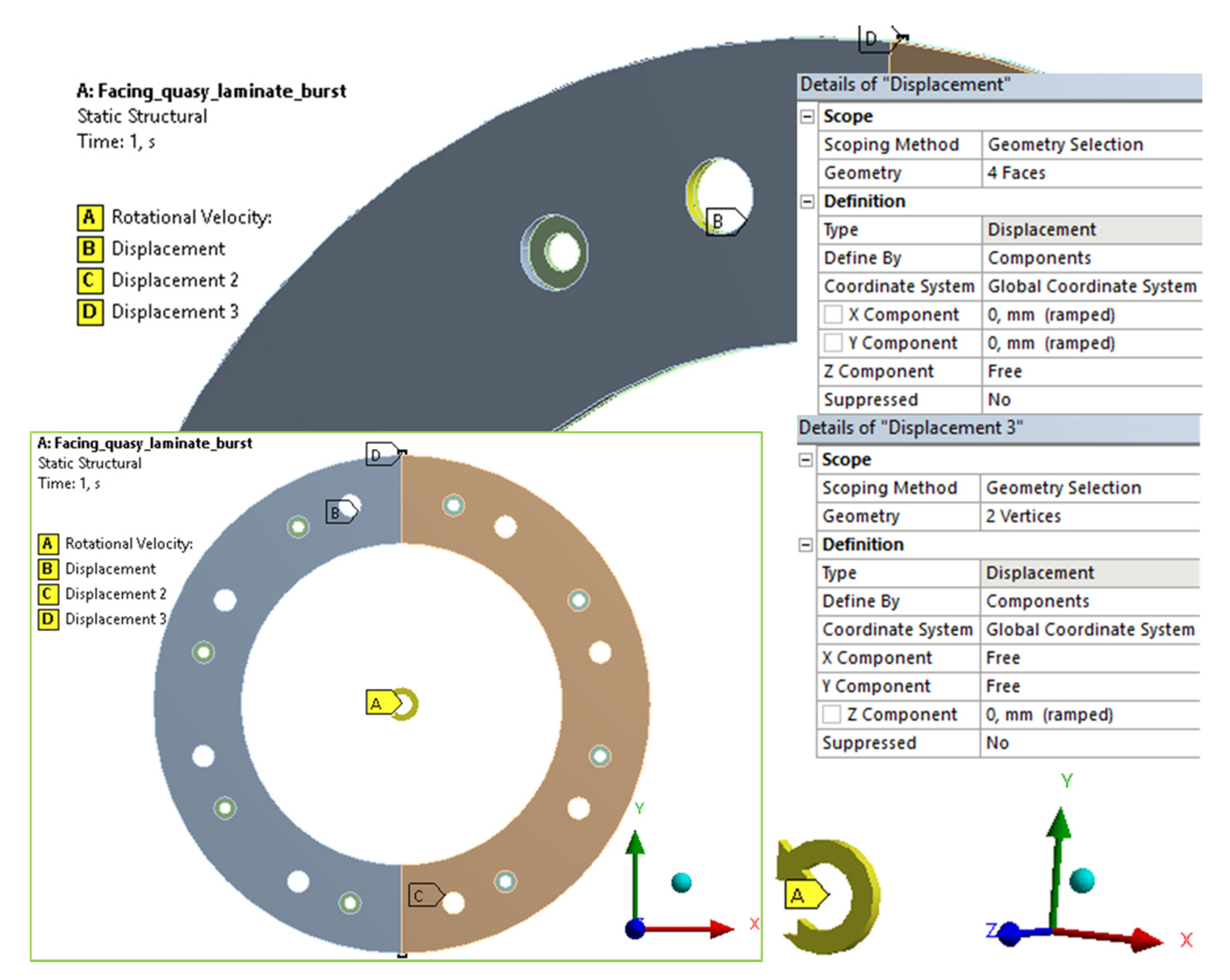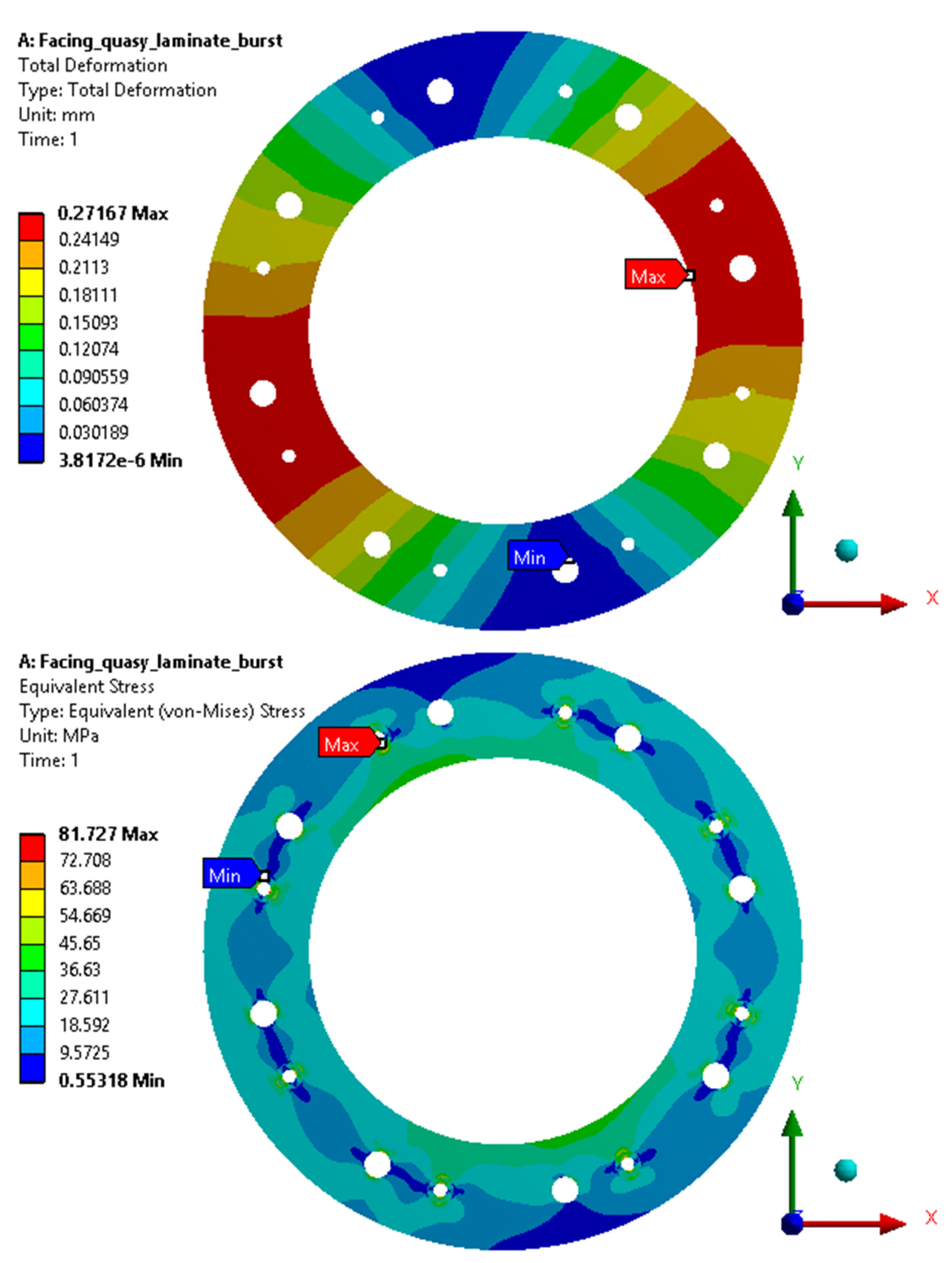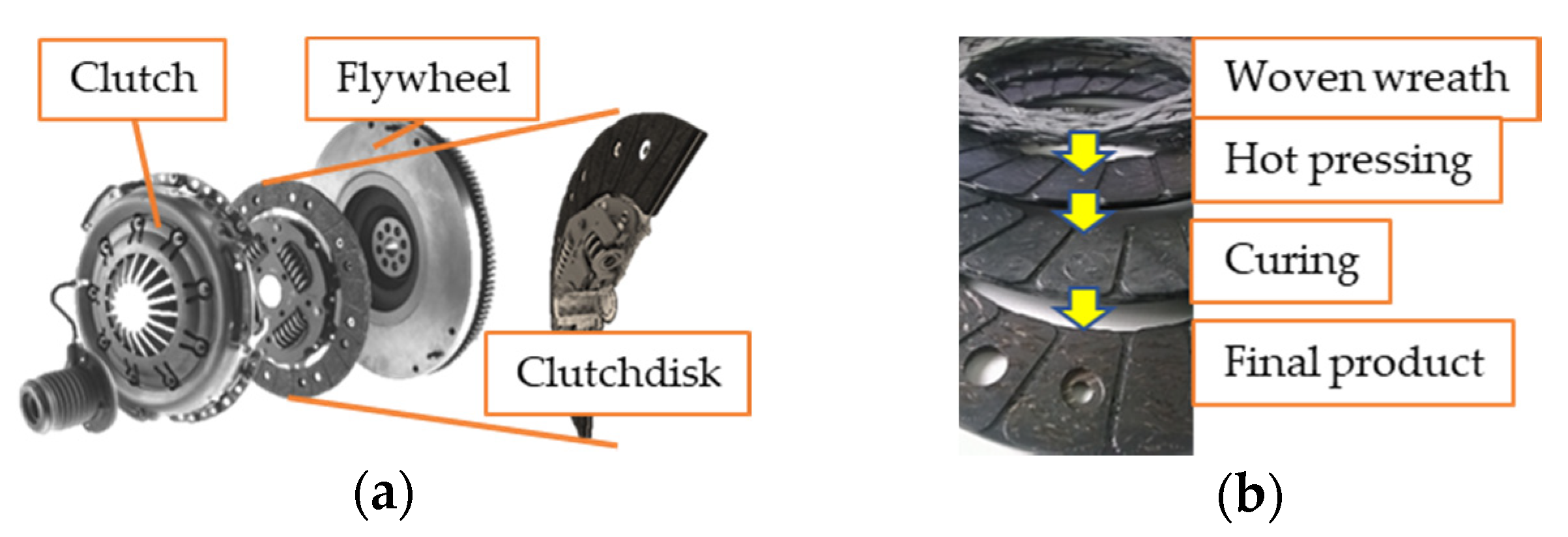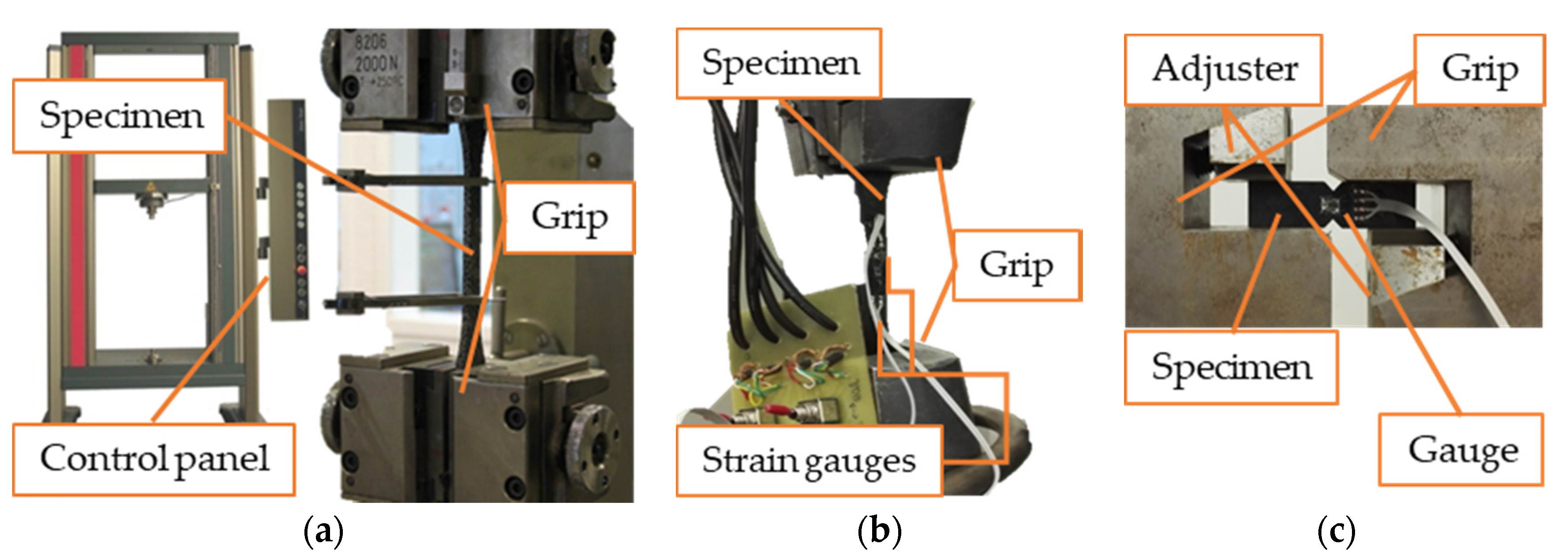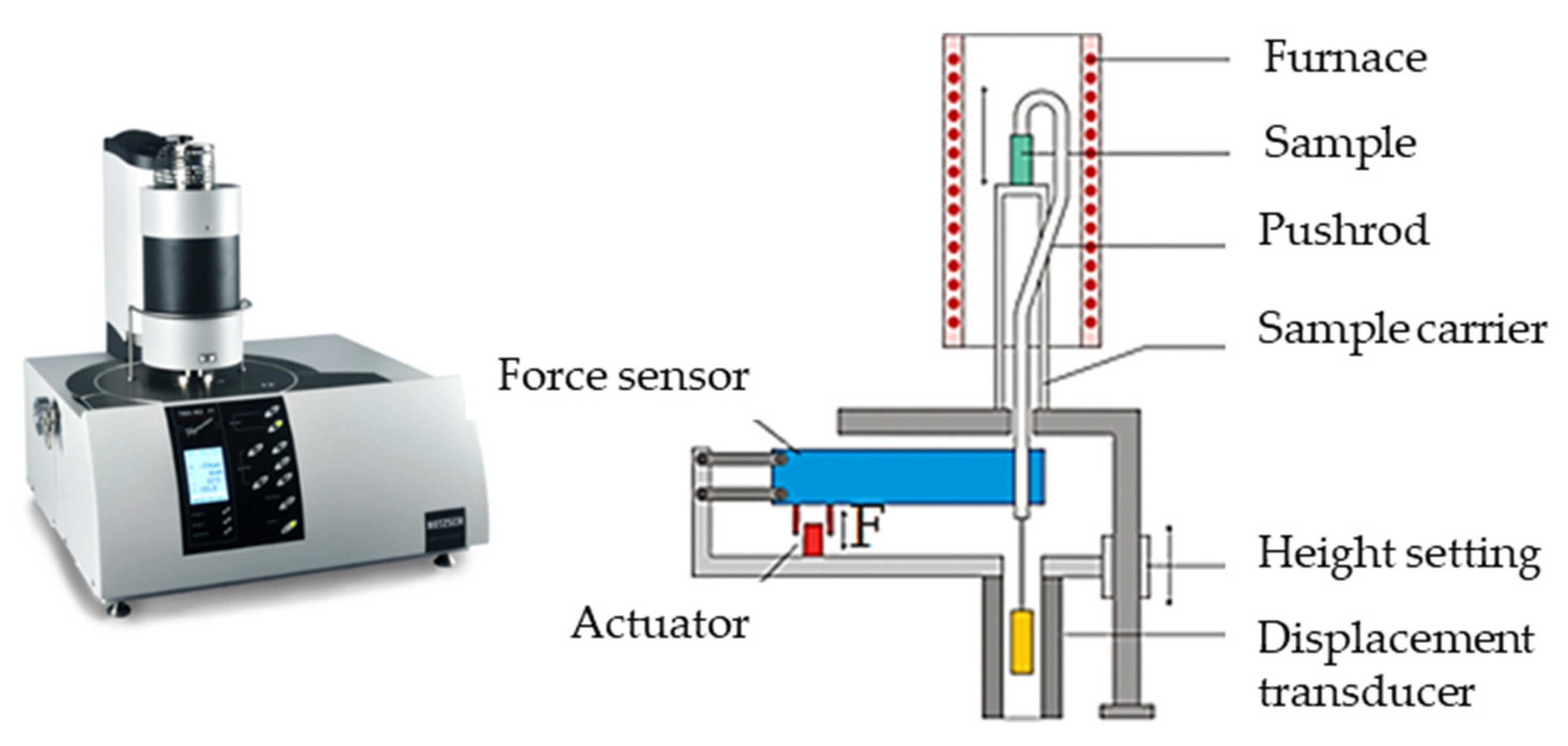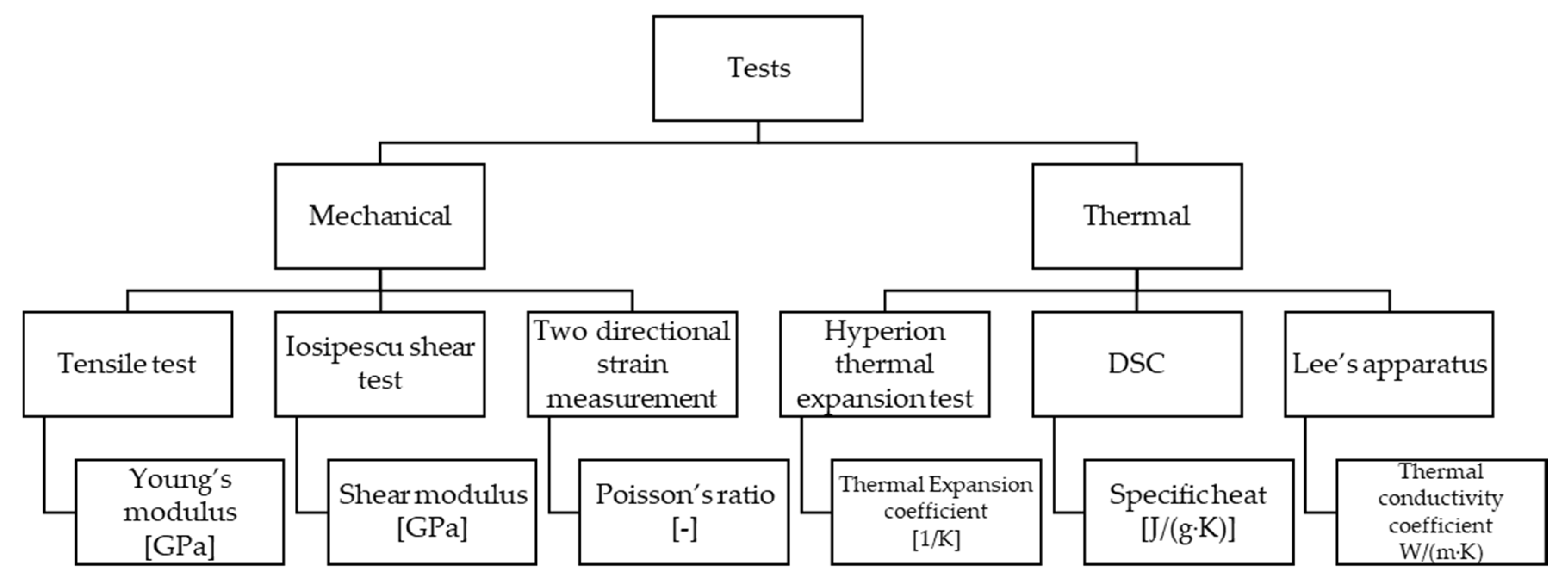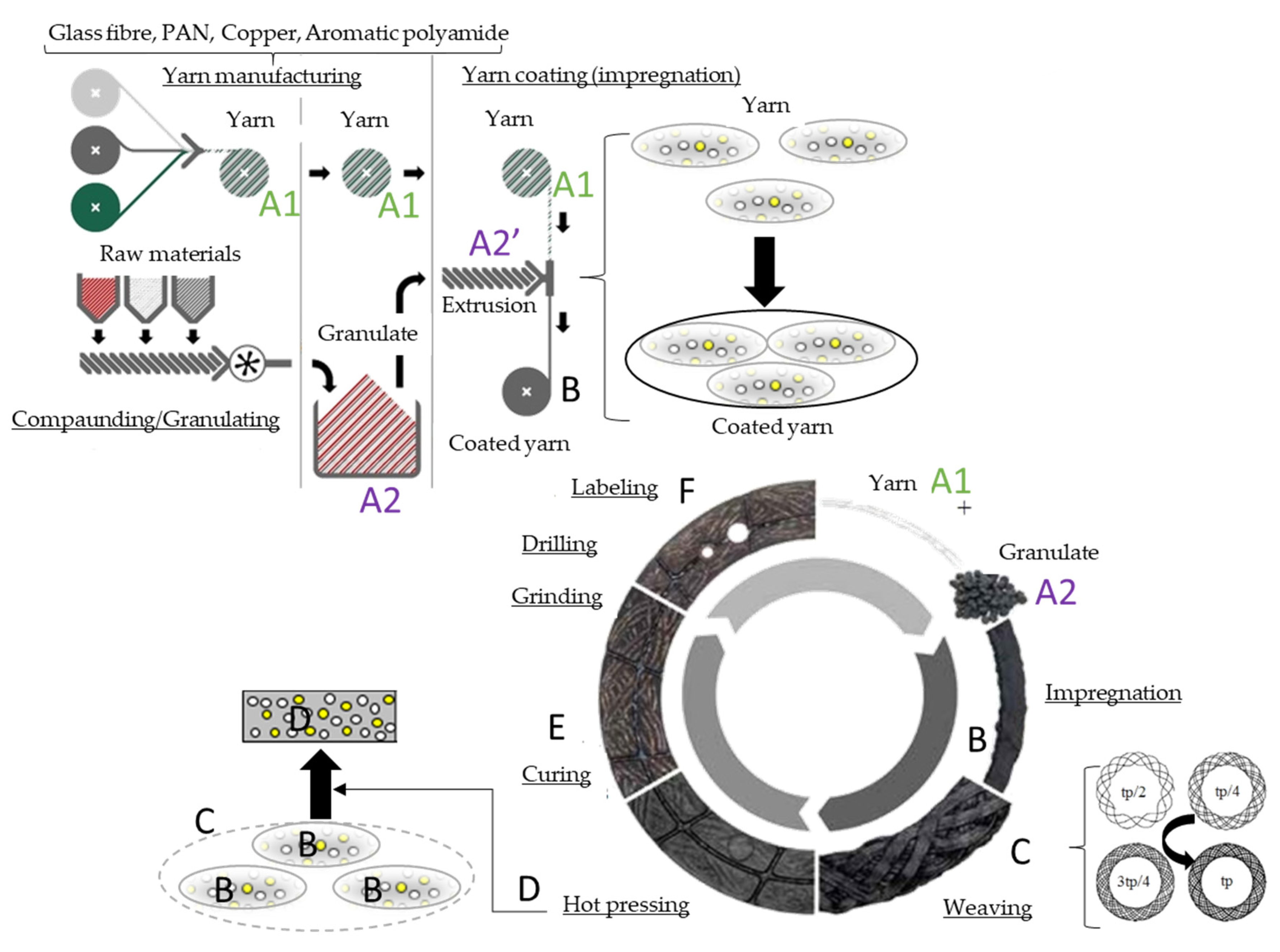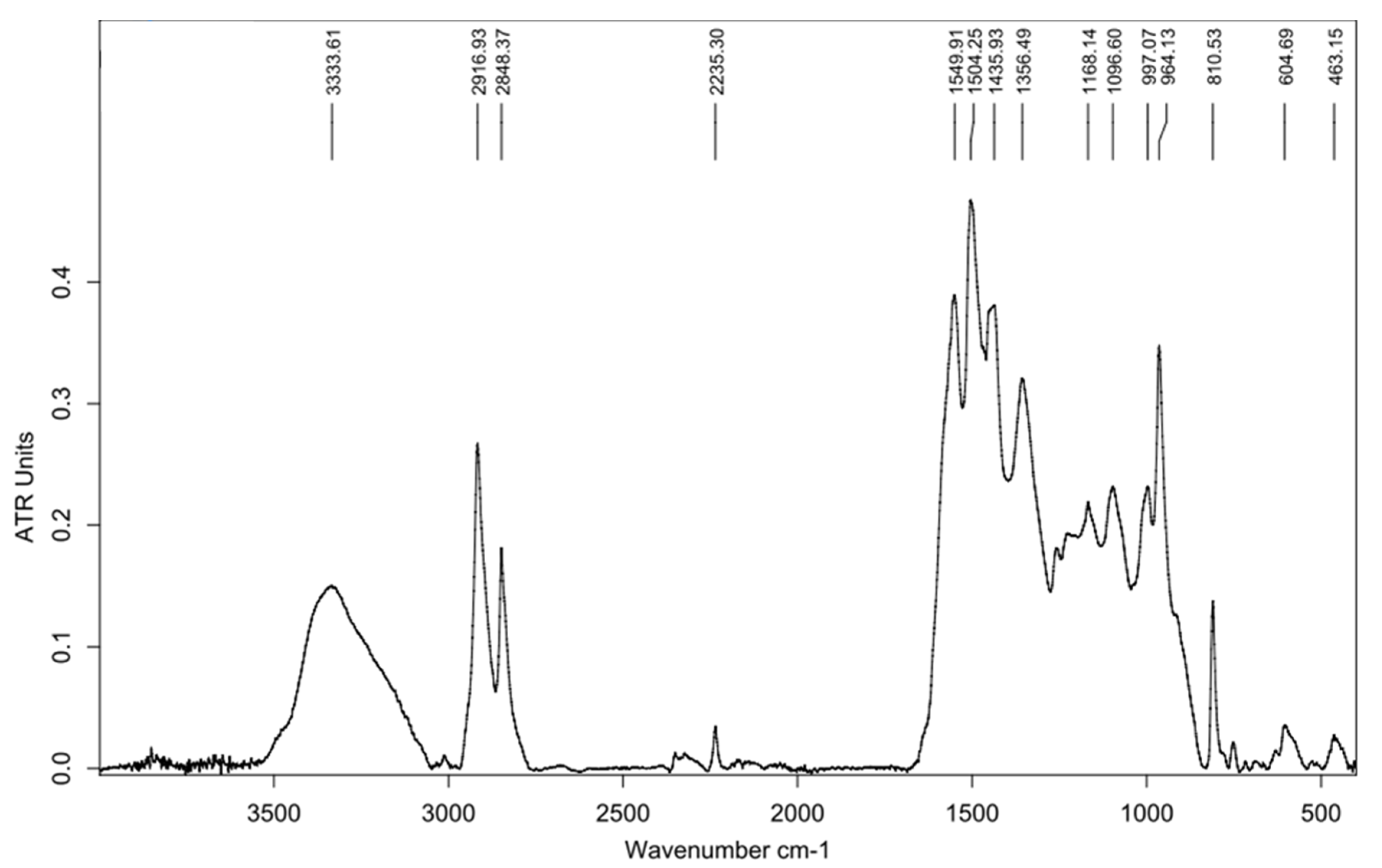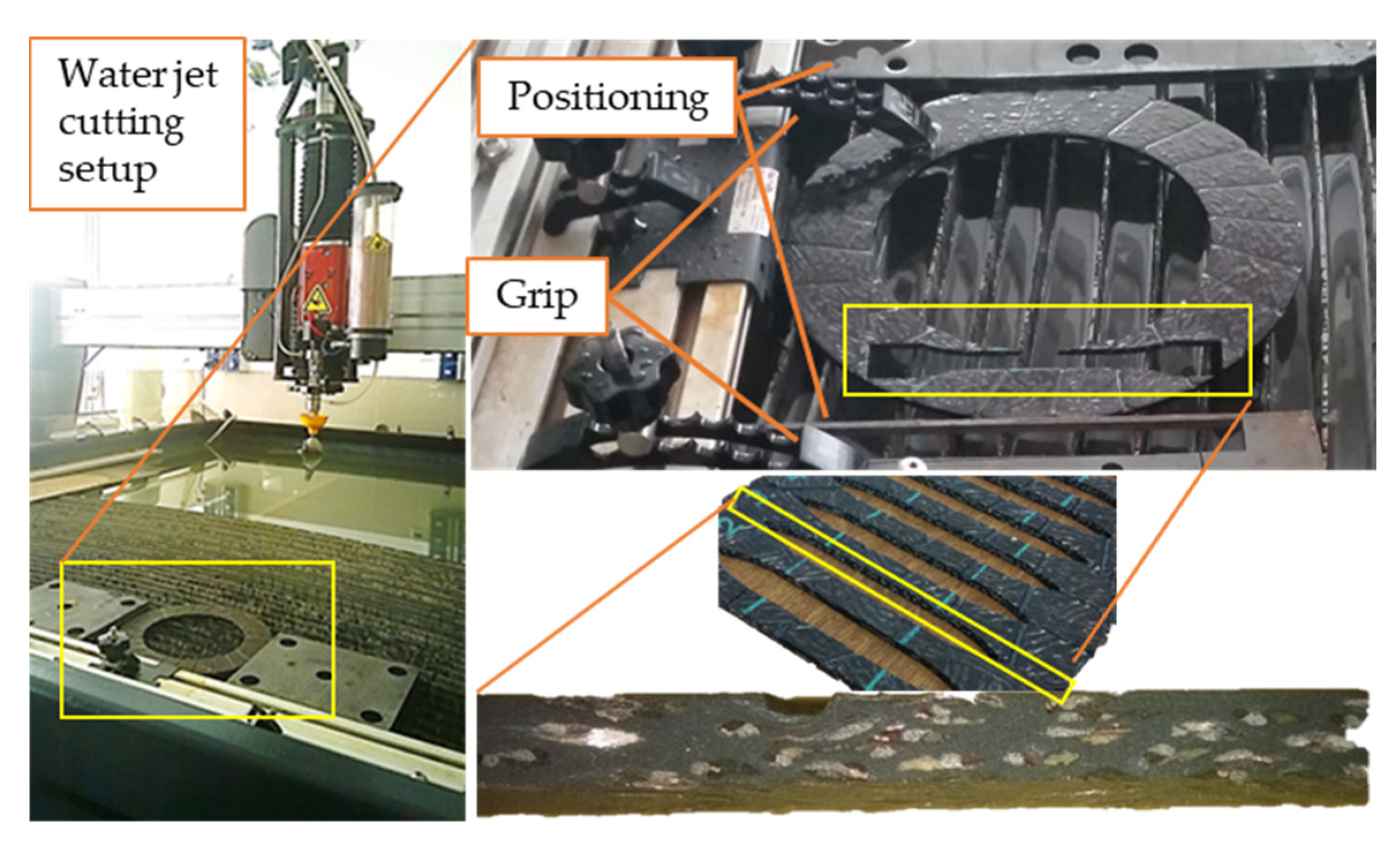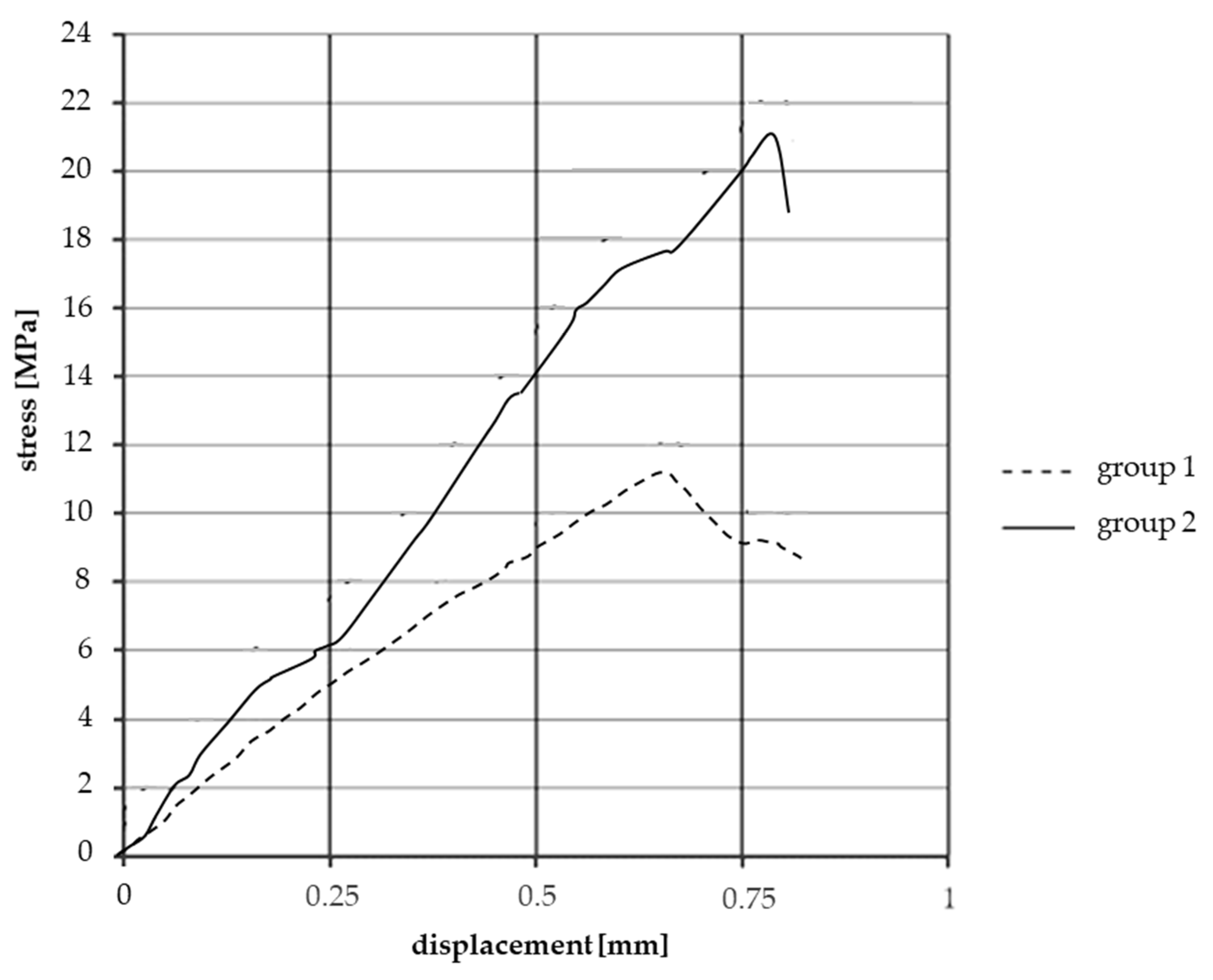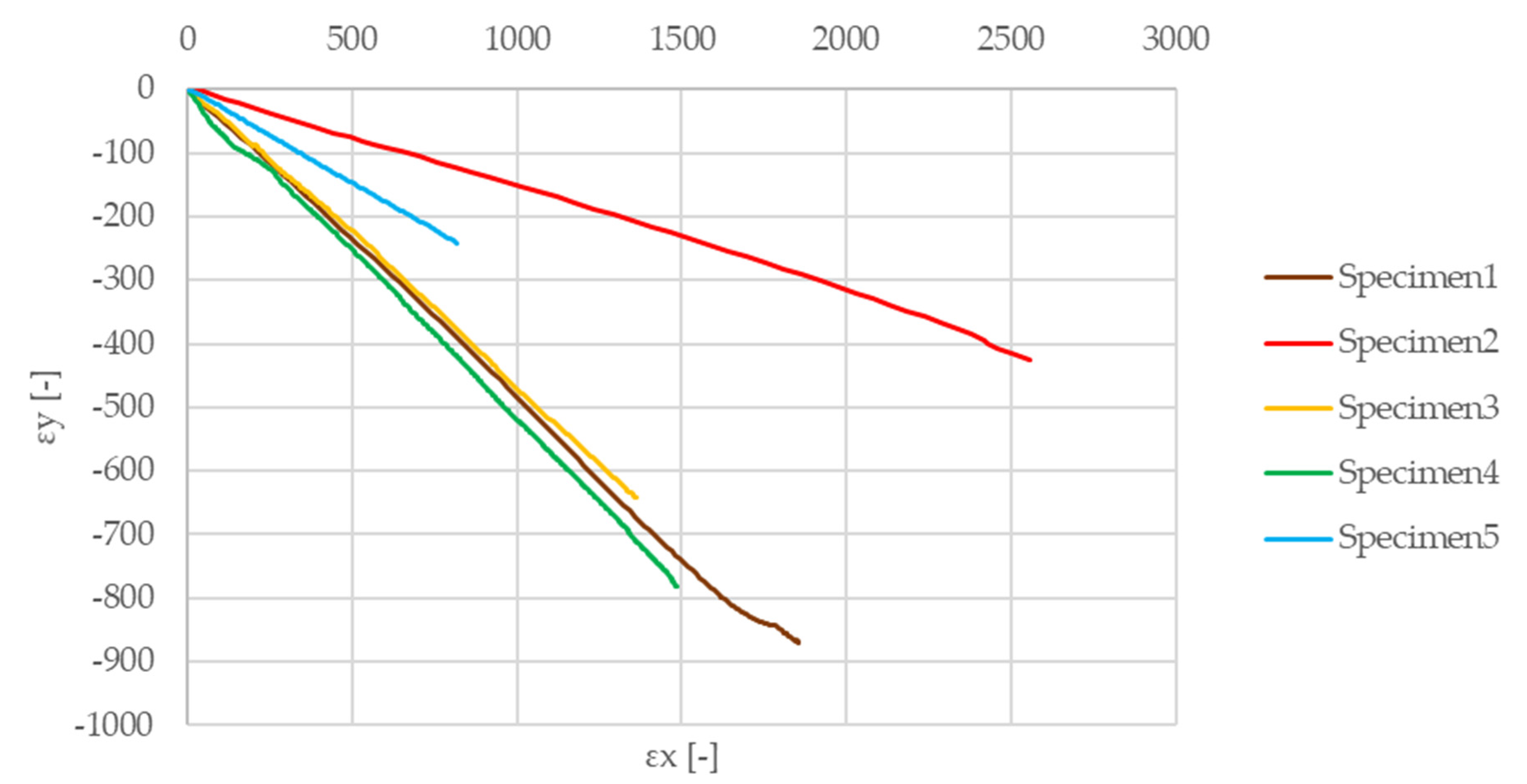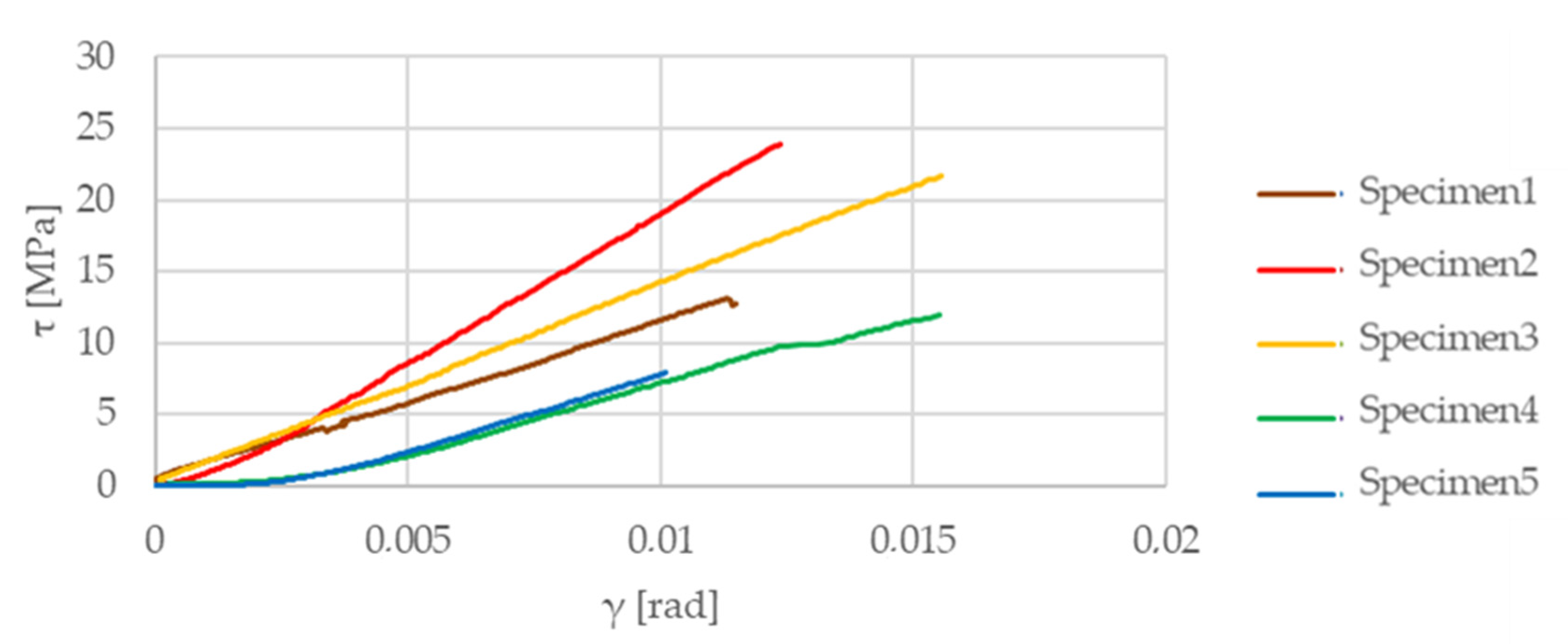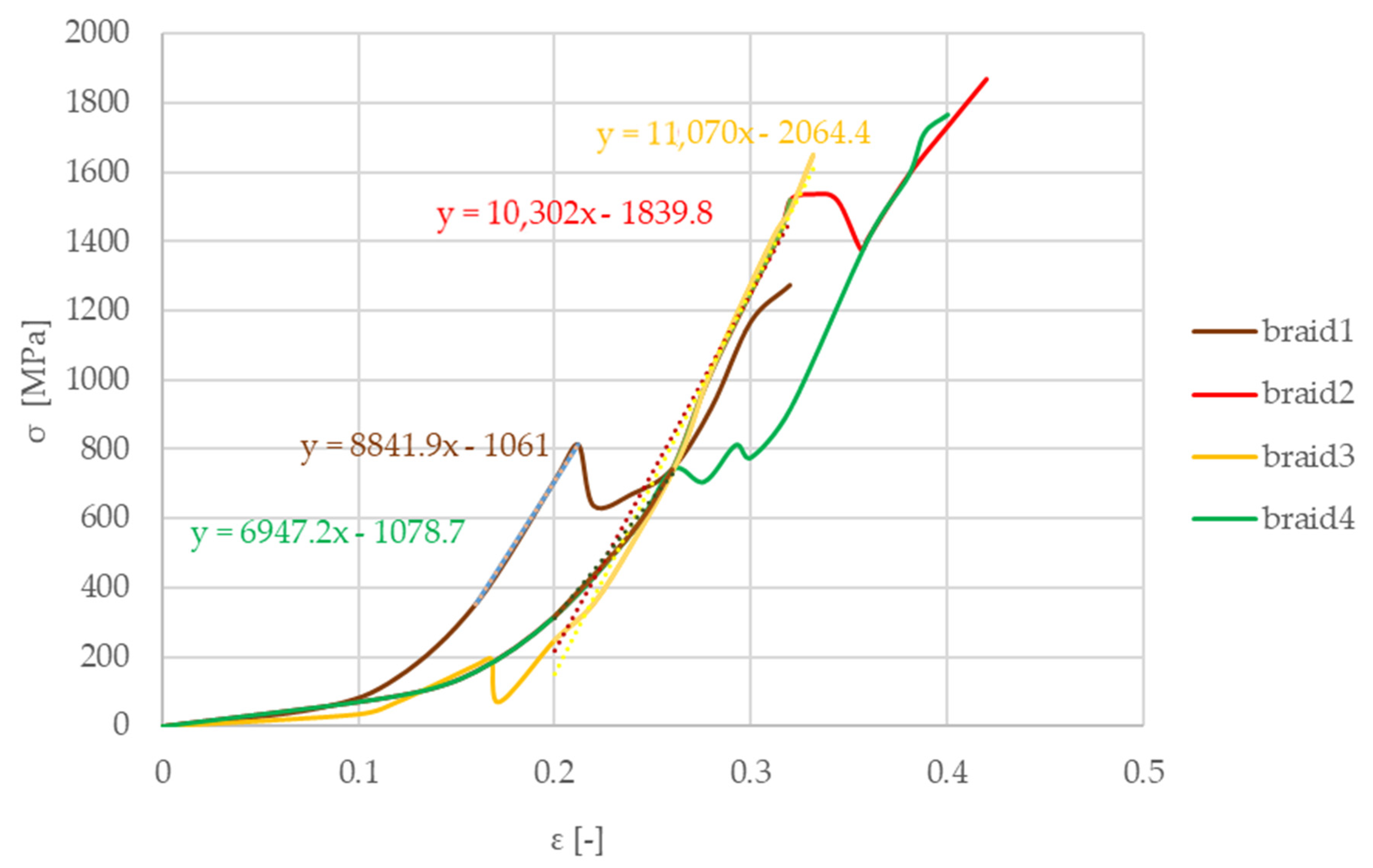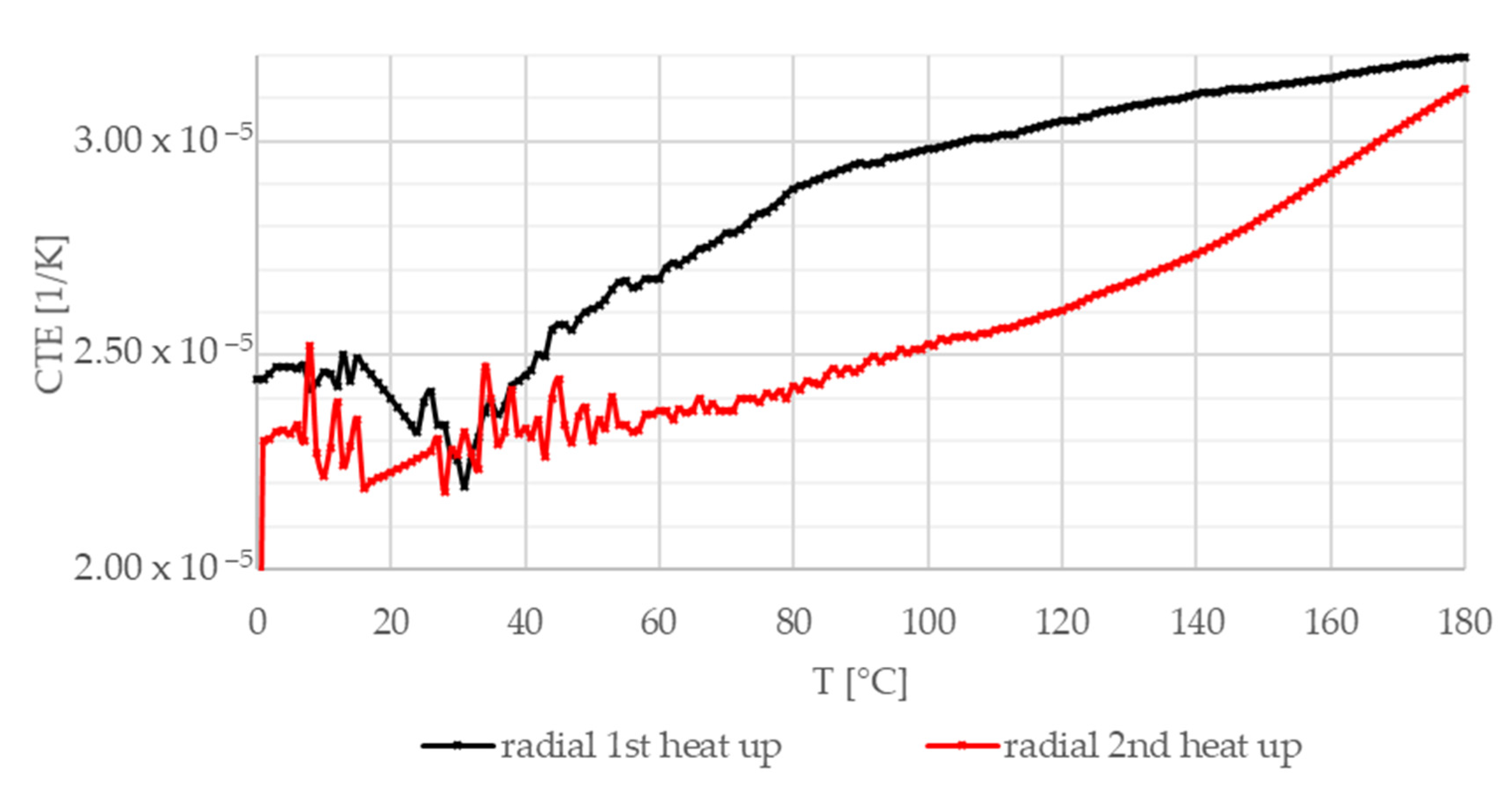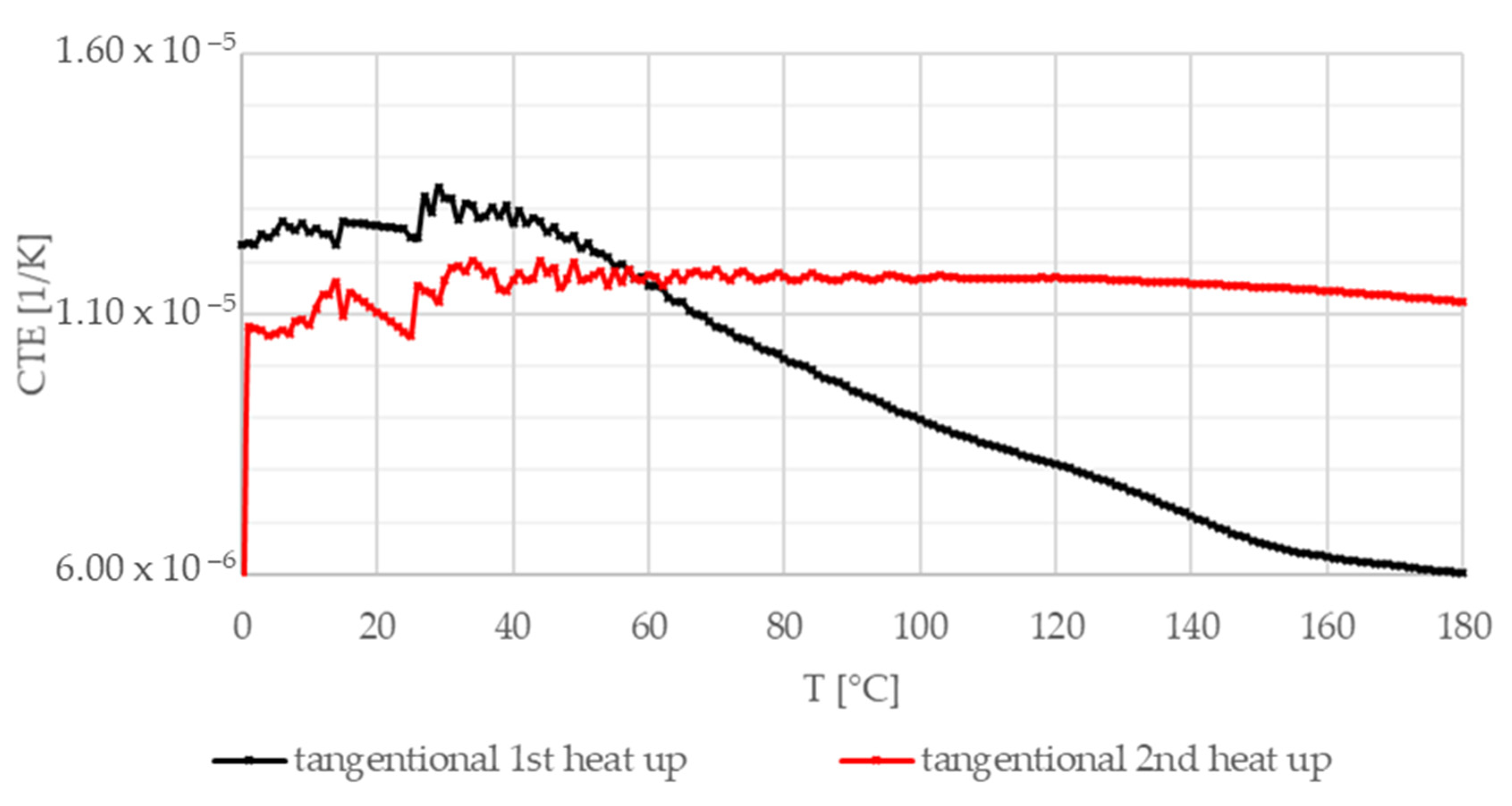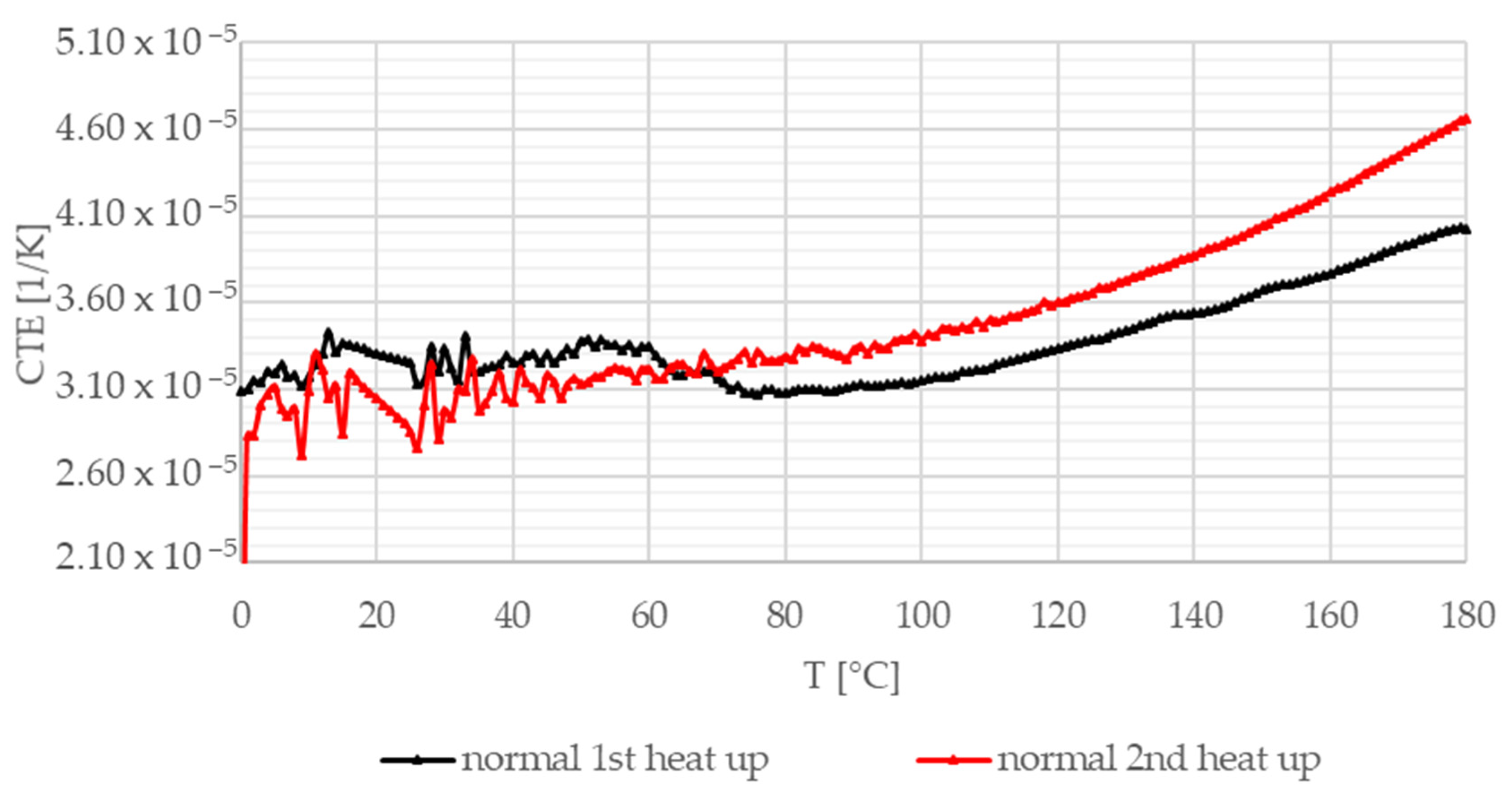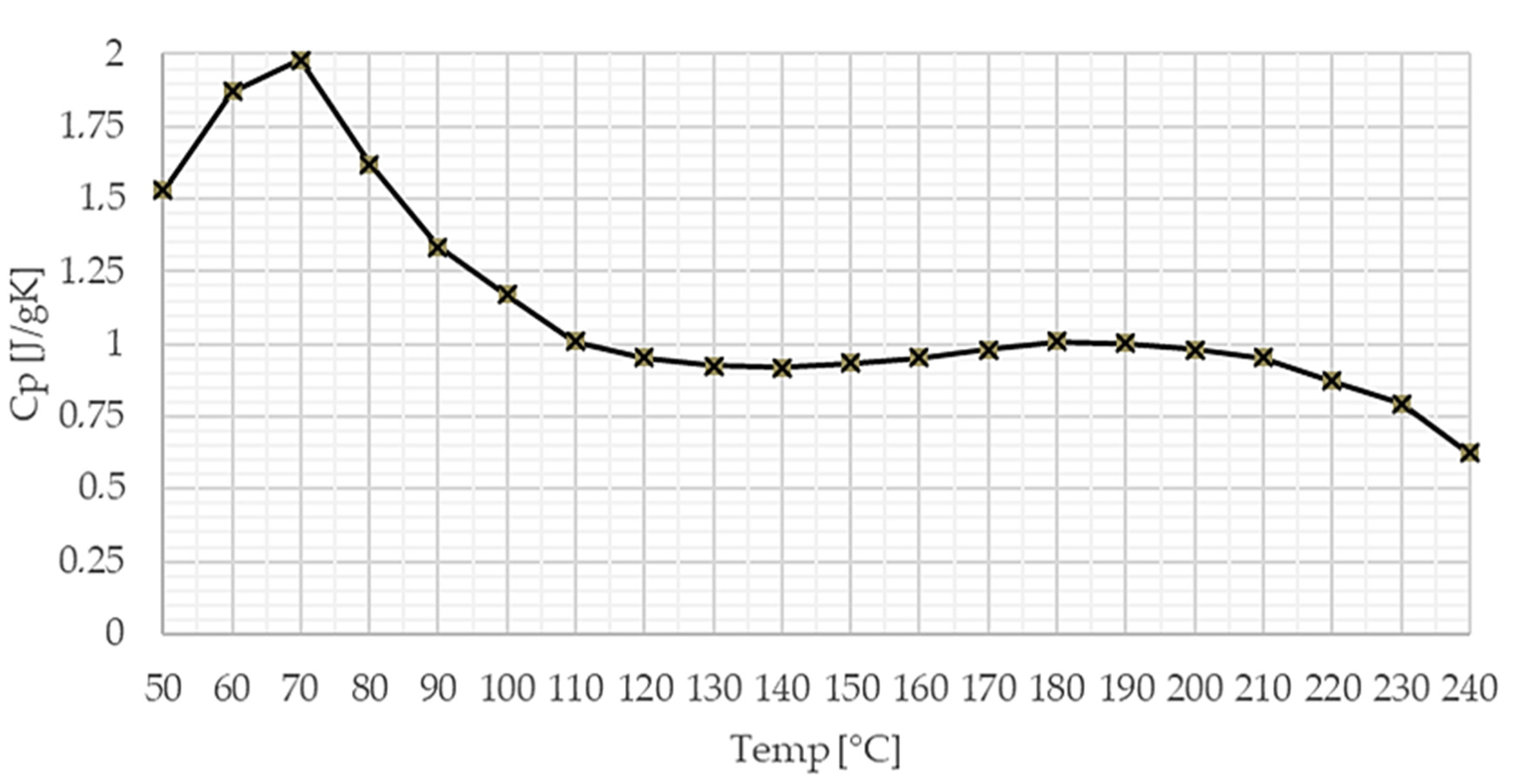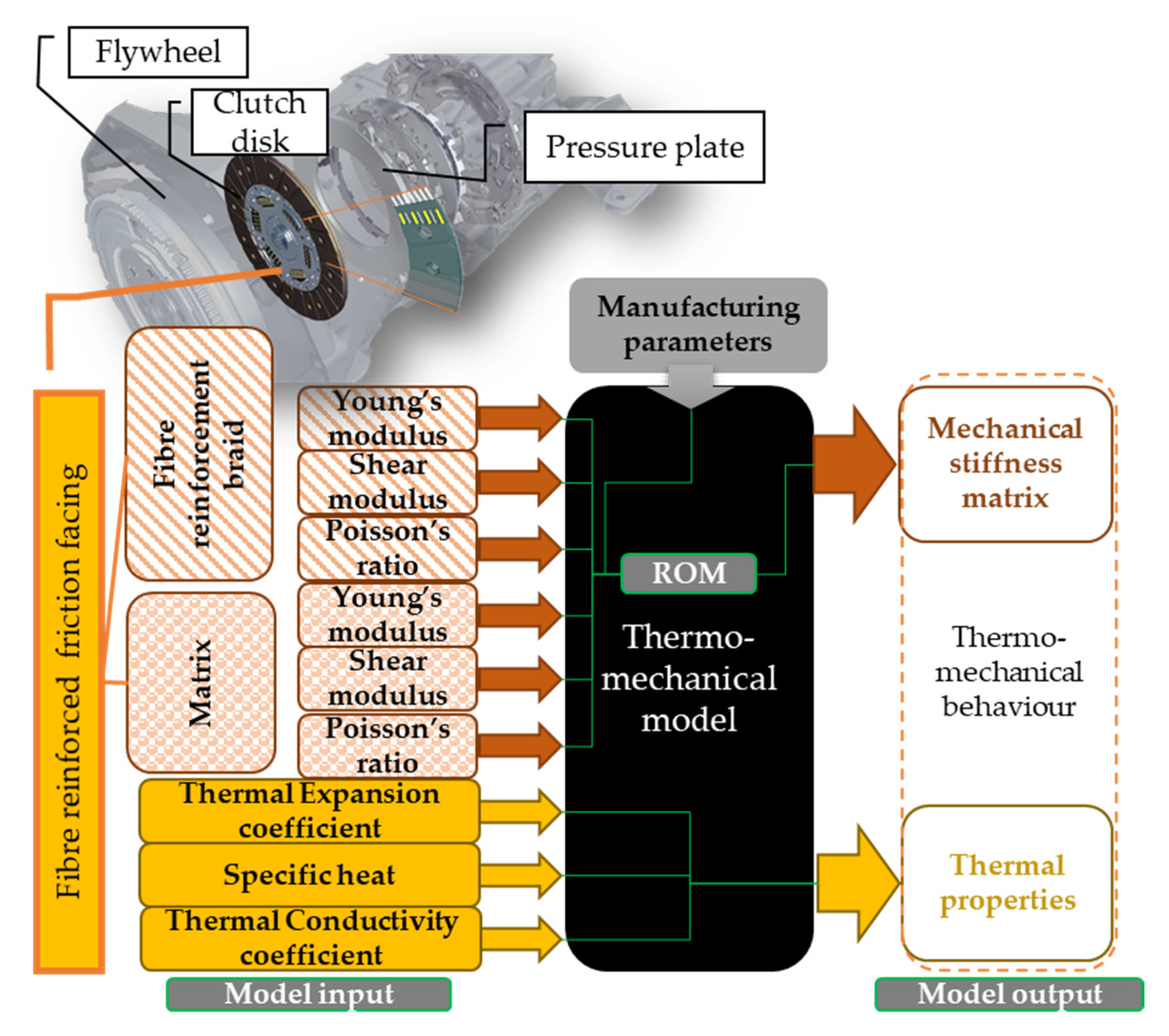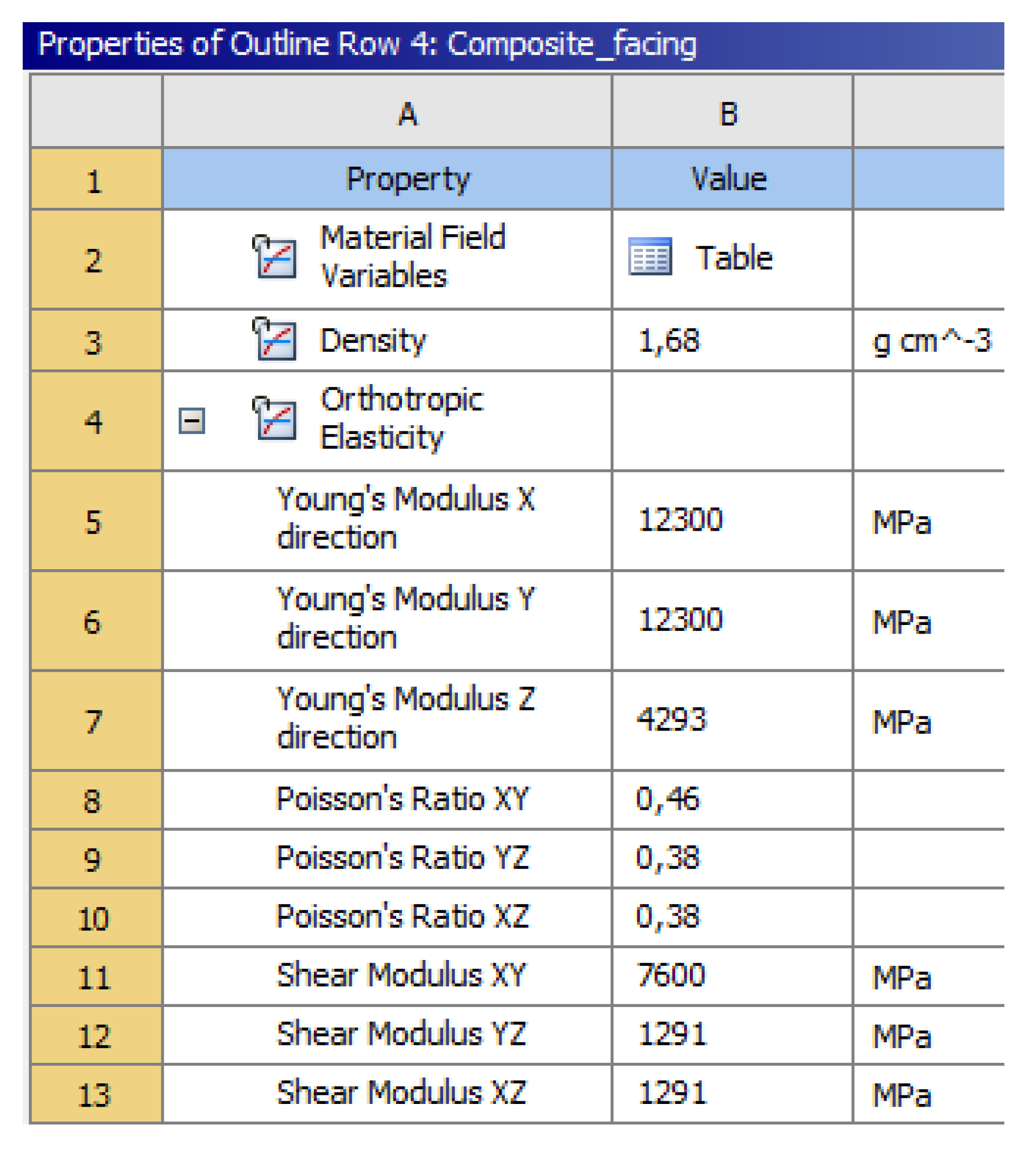1. Introduction
Clutches are responsible for transferring the kinetic energy of a rotating crankshaft coupled to a power source toward a transmission system and wheels in automotive applications.
Figure 1 illustrates a dry, single-disc type of clutch with a fiber-reinforced friction facing. Heat generated via slippage is absorbed then dissipated to the atmosphere by the clutch system [
1].
The operating characteristic requirements of composite friction materials of automotive clutch systems are responsible for determining the remarkable structural and material development of the field through the last century.
Milestones of this development are summed up in
Table 1, leading to the modern hybrid polymer composite friction material clutches of the present day.
During the last century, the development of dry sliding clutch friction facing materials was mainly determined by the construction of the clutch. Newer types (such as belt drives, conical, and single-disc clutches) then surfaced, as shown in
Table 1. Consequently, new achievements in material technology led the geometrical and dimensional restriction-led development of clutch structures toward an optimum design. During the second half of the century, development trends compared to similarly loaded friction applications from different industrial fields were led by common discoveries of the scientific and industrial world of tribology. For instance, material development was highly affected by the efforts to replace asbestos. In the meantime, discovering flexible resins made fiber-reinforced materials widespread [
2]. However, parallel construction and material development allowed improving lubrication, with the utilization of newly discovered components for friction materials and certain effective machining methods [
3]. As
Table 1 illustrates, the synergy and fusion of these two development paths created today’s modern, compact clutches that are resistant to a great variety of extreme challenges. Organic friction facing materials are composites, manufactured via the scatter wound process. The fibers are impregnated with a matrix, then preformed into a wreath, cured, and ground to a final geometry [
4,
5]. The orientation of fiber reinforcement was determined by the special direction of the friction force impact to create resistance against it. It also influenced the manufacturing method. The different manufacturing stage results of these products are illustrated in
Figure 1b.
Requirements derived from the loads and environment of polymer composite friction materials for clutches of present day not only determined their deformability and the stability of their friction coefficient and wear resistance with heat resistance against thermal loads, but also influenced their strength against transient mechanical impacts or high rotational velocity. Components of these materials are usually classified as reinforcements, binders, friction modifiers, and fillers. On the other hand, this separation mainly has significance during production. The reason for this is that a component from one group usually affects the behavior of the material from the aspect of another component group. For example, fibers (typically aromatic polyamide, glass, carbon, steel, cellulosic fiber, thermoplastic fiber, and asbestos, which is banned) play a critical role in determining not only the mechanical strength, but also the thermal resistance and friction/wear properties of these materials [
6]. For instance, Bijwe [
7] stated that, among those fibers responsible for high strength and modulus, aromatic polyamide guarantees high thermal stability (e.g., carbon and steel fibers), good wear properties, and a stable coefficient of friction.
Friction material field investigations usually detail one main topic from the mechanical, thermal, and tribological ternary while reflecting on the requirements, loads, and operating conditions, even though separating the different loads occurring in a clutch disc facing may result in difficulties due to their complexity. The main topics include mechanical investigations, thermal aspects, or tribological researches [
2].
From a mechanical aspect, parameters affecting warpage, shrinkage, and residual stress, the adhesion between fiber and matrix and its governing parameters, fiber–fiber friction conditions, and the influence of waving technology parameters are investigated. In addition, different types of mechanical tests are usually performed [
2]. During the creation of hybrid composites, achieving the required geometry can be a fundamental challenge; thus, Zarrelli et al. [
8] concluded that selecting manufacturing parameters wisely reduces cost and prevents problems such as warpage, residual stress, micro cracks, and fiber–matrix failures.
The typical curing method of thermoset polymers consists of two steps: an isotherm step and cooling. During the former, the polymer suffers shrinkage as it solidifies from a liquid state while the fiber remains unchanged. During cooling, the fiber shrinks as well, but with a different thermal expansion coefficient to the matrix. In this way, the residual stress during curing is governed by volume change and material properties [
9]. Gurunath et al. [
10] developed a new resin for friction composites with phenolic resin binder in order to avoid shrinkage (an end production issue). Zarrelli et al. [
8] also investigated manufacturing failures such as spring-in phenomena, warpage, and residual stresses (due to curing-induced chemical shrinkage, heat expansion, and change in viscoelastic modulus) with a novel resin sensitivity model, while trying to reduce residual thermal stress caused by processes in carbon fiber thermoplastics. Greisel et al. [
11] pointed out that an increase in interfacial fracture toughness can be achieved by annealing the untreated composite at temperatures beyond the glass transition temperature of the matrix. The control of curing temperatures for minimizing shrinkage and the separation on different stresses caused by this phenomena and thermal expansion were the goals of Kravchenko et al. [
12] when creating a multiscale model for the response of a bimaterial “thermostat”.
Fiber–matrix adhesion and fiber–fiber friction are also influential topics explored in the mechanical field. One of the disadvantages of fiber reinforcement with natural fibers is the weak adhesion between the fiber and matrix, which can have a negative effect on the physical and mechanical properties due to the incompatibility of the hydrophilic surface of the fiber and the nonpolar surface of the polymer [
13]. Regarding inner friction, de Lange et al. [
14] found evidence by conducting pull-out tests that dispersive and polar interactions created through curing can increase the surface energy and strengthen adhesion between aromatic polyamide fibers and different matrices. Xie et al. [
13] discovered that silane coupling agents not only increase the interfacial adhesion of natural fibers to the target polymer matrices, but also improve the mechanical and outdoor performance of the whole composite.
From a manufacturing aspect, Bigaud et al. [
15] stated that, using a special so-called three-dimensional (3D) braiding technique, carbon fiber woven with PA12 at different braiding angles resulted in different stiffness and strength values. Only some studies covered the effect of waving parameters since these are well written in patents, while the woven wreath must reach a certain density, which makes these manufacturing set-up parameters almost unchangeable. The sensitivity of the mechanical properties of the clutch facing to waving parameters is an important topic to create optimal geometries.
Basic mechanical tests are essential to determine the mechanical properties of a material. However, only a few articles dealt exclusively with dry clutch facing materials. These tests are not only essential for new materials but are also part of manufacturing in the testing phase. Nevertheless, a numerical model is more effective to cut testing costs resulting from expensive lifecycle investigations. By proposing three types of failure criteria in three dimensions (maximum stress; Tsai–Hill, Tsai–Wu; Hashin–Rotem, Sun, NU) Daniel et al. [
16] developed test methods for complete mechanical characterization of textile composites.
Among
thermal topics, most articles aimed to investigate hotspots (small areas where extremely high temperatures and pressures occur when speed is higher than a critical value [
2]), thermo-elastic instability, curing induced shrinkage, thermal properties affected by material or manufacturing parameters, and third body phenomena. Due to complex load cases, the goal with thermal models is simplification in order to reduce computational time and costs. Today’s finite element software contains special features making thermal numerical analysis possible.
The mechanism of hotspots consists of an instability that is part of the sliding system loaded by friction heat in accordance with the pv (MPa·m/s) theory of polymer sliding surfaces. The heat flux generated on the surface of the contact is proportional to the contact pressure, where higher temperature increases in higher-pressure areas lead to increased thermal expansion, thereby further increasing the local pressure. This phenomenon, which makes the pressure distribution inhomogeneous, is called frictionally induced thermo-elastic instability (TEI). Zagrodzki et al. [
17] simulated unstable thermoelastic friction system behavior (due to material composition and geometry failures) in a wet multidisc clutch, finding that thermoelastic stability can be improved (considering manufacturing limitations) with the reduction of steel disc thickness and hotspots can be controlled by the modulus of elasticity. The change in hotspot location after cooling in a frictional sliding system was presented by Ahn and Jang [
18] via a thermo-elastoplastic instability (TEPI) involving a two-dimensional contact problem-solving transient finite element simulation.
Among the manufacturing steps, curing may be the most influential and the most unpredictable phase to determine the final shape due to shrinkage affecting thermal and surface properties. The volume shrinkage is present as chemically induced shrinkage in the resin of friction composites, which clearly affects the residual stresses and the warpage phenomena [
19]. Coupling between volume variation and thermal gradients was considered by Nawab et al. [
20] for modeling residual strains and stresses to investigate chemical shrinkage of thermoset polymers. They concluded that, since for an equal mass the chemical shrinkage of fibre carrying resin is less than that of neat resin, composite material residual stresses resulting from shrinkage are hindered by fibers.
Higher fiber-to-matrix ratios can rapidly evacuate the frictionally induced heat when cyclic engagements are repeated—a phenomenon not present with a single engagement, as discovered by Khamlichi et al. [
4].
An energy storage and conduction-capable uniform layer represented the third body in the thermal numerical model of Majcherczak et al. [
21].
On the basis of loads operating under hybrid friction composites, their behavior can be tabulated as impact and fatigue response. Sfarni et al. [
5] found connection between these two types. They pointed out that imbedding—a phenomenon developed during the lifetime of a friction clutch due to steel parts causing residual deformation of the friction material—is partially induced by high mechanical and thermal impact loads and intensive wear due to local contact pressure distribution peaks. On the other hand, Menday and Rahnejat [
22] found evidence that fatigue response can influence impact the behavior of dry-friction clutch facings. They illustrated that judder—an unwanted axial vibration occurring as an impact load—is less likely to harm the transmission system, if the gradient of the alteration of the coefficient of friction of the friction facing during lifetime remains positive or at least 0.
Tribological scholars often detail the effects of components and manufacturing parameters on frictional properties of the material. Friction coefficient and wear are usually observed and evaluated via pin-on-disc test set-ups. Tribological behavior, along with harmful effects of the frictional contact, is often described in empirical or physical equation-based models. However, our aim here is to establish a coupled thermomechanical model of dry-friction hybrid composite clutch facings, whereas tribological aspects will be covered in future studies by expanding the modeling capabilities of the current concept detailed in this study.
To conclude, clutch composite friction materials developed in strong relation to clutch construction through material industry milestones, such as the discovery and utilization of flexible resins, developments regarding different reinforcing fibers, and environmental and healthcare aspects, resulted in today’s state of-the-art applications [
2]. Open questions of the field still circulate around friction behavior under different conditions, along with wear characteristic sensitivity, thermal loads and responses, and even manufacturing steps, with studies performed to determine warpage, shrinkage, and residual stresses, the effects of different fillers, production-induced problems, or biodegradable materials [
3].
Usually it is difficult to separate the thermal, tribological, and mechanical effect of material components and manufacturing parameters. The complex synergy of these systems determines the properties. Moreover, properties of the components have no straight effect on final values since the cross-effects take a main role without considering the behavior under loads.
Although there are many considerable research efforts to develop materials by modifying one or two components before validation through experiments, there is no general complex material model for hybrid friction composite facing materials to correctly describe their behavior (e.g., in order to decrease testing costs).
The surface morphology of these materials lacks thorough investigation. There is no data available on specific wear coefficients when considering dry-friction facing material contacts with different surface roughness values or initial facing surface roughness.
The steady state and running conditions of a frictional life cycle are not well described in the literature.
The chemical reactions, physical changes, and effects of surface discontinuities are not yet clear, giving space for further optimization. Although TEI was thoroughly researched by scholars, the thermal test devices used typically investigate the final states, whereas the inner steps and mechanisms can only be extrapolated. Moreover, the effects on surface properties and morphology have not been deeply investigated. Friction and wear with surface changes are usually described by tests, with only a few finite element analyses reported from this field. The development of finite element software capabilities allowed the usage of complex models to describe friction, wear, or thermal aspects. These models were mainly developed to describe vibrations and thermal effects.
The aim of this paper was to illustrate the investigations necessary to determine the mechanical stiffness matrix parameters and thermal properties of a woven fiber-reinforced dry-friction material manufactured with given parameters. By revealing and solving challenges facing identification efforts, this study can be used to guide material identification methods for similar complex materials. The experimental results provide input parameters for thermomechanical simulation contact model development. The future aim is to cover friction material lifetime effects on dry clutch tribology by developing the model further.
2. Test and Model System
The effects of the tribological aspects of friction materials during their lifetime on transmission system properties can be modeled via a thermomechanical coupled contact model to create complex load cases. Thermomechanical models are usually used for investigations of transmissible torque loss due to heat peaks to provide comparable simulation data with certain test results. However, by widening the range of corresponding aspects considered, and by possibly decreasing the number of necessary tests, cost and time savings can be achieved. Moreover, these tests usually result in degradation of friction surfaces or permanent defects of the friction material, creating waste.
The model system illustrated in
Figure 2 can be divided into two levels: thermomechanical (model level 1) and additional coupled tribological (tribomechanical) model (model level 2).
In addition to characterization of mechanical behavior, thermal properties for thermal responses are required. Depending on the dimensions of the model shown in
Figure 2, the number of necessary parameters varies. With approximately axisymmetric geometries present in the clutch system, two-dimensional (2D) models are often utilized. On the other hand, during their lifetime, the surfaces of friction materials become unable to be specified through 2D simplifications. Therefore, properties describing three-dimensional behavior need to be determined.
For a thermomechanical coupled finite element contact model, as detailed in this study, a mechanical stiffness matrix is needed to set up the basic equation of a mechanical finite element method, i.e., the general Hook law.
where σ
ij is the stress tensor, C
ijkl is the stiffness matrix, and ε
kl is the strain tensor in a Descartes coordinate system. The stiffness matrix of orthotropic materials such as a clutch friction facing include nine independent parameters (1 =
x; 2 =
y; 3 =
z)
Considering the created woven wreath structure of fiber reinforcement created during production, woven clutch facing friction materials are transverse orthotropic. Therefore, by organizing Equation (2), a flexibility matrix (inverse of stiffness matrix) is created.
where
Ei is the Young modulus,
Gi is the shear modulus, and
νi is the Poisson’s ratio.
To perform the tensile strength investigation of the cutout piece of clutch facing in terms of Young modulus and strength, DIN 53455 patent specifications were met on a 724002/2015 Zwick 10 kN experimental equipment with 5 mm/min pulling speed, as shown in
Figure 3a. Measuring the initial surface area (A
0) and length (l
0) with the maximum force (F
max), the Young modulus and strength values could be calculated using Equations (4) and (5).
The two-directional strain measurement shown in
Figure 3b and the Iosipescu shear test illustrated in
Figure 3c are necessary to determine the elastic modulus, Poisson’s ratio, and shear modulus of the dry-friction clutch facing material.
The coefficients of thermal expansion in different directions, as well as the specific heat and thermal conductivity, were determined by experiments. The coefficient of thermal expansion describes how the size (for example length of volume) of an object changes with a change in temperature. To determine this value for the hybrid composite facing material, tests were conducted at the Thermophysical Property Investigation department (Applikationslabor Sektion Thermophysikalische Eigenschaften) of the laboratories of NETZSCH-Gerätebau GmbH in Germany using an N-5667-P-16 NETZSCH TMA 402 F1 Hyperion
® device.
Figure 4 illustrates the elements of the apparatus on the left, equipped with a steel furnace capable of a temperature spectrum of −150 °C to 1000 °C. Here, 7–11 mm long test specimens were heated up to 180 °C at 5 K/min.
The automatic test execution, data acquisition, and evaluation were carried out using universal software for PC and control electronics. The software enables the determination of expansion coefficients, onset and peak temperatures, turning points, expansion speeds, density, etc.
Specific heat capacity can be described as the amount of energy that must be added, in the form of heat, to one unit of mass of a substance in order to cause an increase of one unit in its temperature. Differential scanning calorimetry (DSC) experiments were performed at the laboratory of Schaeffler Friction Products GmbH, Morbach to determine the specific heat.
The thermal conductivity coefficient is equal to the amount of heat conducted through the one unit of area of a substance due to one unit of temperature per unit of time. Specification of this value for the investigated friction material also took place at Schaeffler Friction Products GmbH Morbach.
Lee’s apparatus was utilized to determine the thermal conductivity coefficient, as illustrated in
Figure 5. A disc (S) made of the investigated material was placed between two discs made of brass (B) and steel (M). Above them was placed a chamber (H) capable of steam conductivity. At steady state, T
1 (T
A) and T
2 (T
B) describe the temperatures of the steel and the brass discs, given at both sides of the investigated disc. Heat flow can be described by Equation (6), where the disc thickness is d and the cross-section is A.
The heat loss of brass toward the environment can be described by Equation (7), where
c is the specific heat capacity of brass and
dT/dt is the cooling rate at T
2.
The necessary experiments for the mechanical and thermal identification of fiber-reinforced hybrid friction material of a dry-single plate clutch are summed up in
Figure 6. Material identification test results then served as input parameters for a coupled thermomechanical finite element contact model that included effects of surface parameters during lifecycle and running under different operating conditions (initial surface roughness of the facing surface, sliding velocity, etc.) to provide a wider range of aspects covered by simulation, thereby cutting back testing costs.
6. Conclusions
A remarkable development defines the history of automotive clutch friction facing materials, during which construction and material discoveries and efforts resulted in fiber-reinforced hybrid composites becoming the most commonly used dry-friction materials in the industry.
Novel materials open novel fields of investigations, not only in terms of identification, but also in terms of challenges for researches to handle during sample creation before conducting any tests or completing characterization. With potential damage being a factor, abrasive water jet machining turned out to be an efficient application for the creation of test samples for mechanical and tribological investigations of hybrid composite dry-friction clutch facing materials.
Modeling the complex hybrid mechanical material system of a woven fiber yarn (glass fiber with aromatic polyamide, copper, and PAN) reinforced friction material was performed with the idea of creating separated component groups (matrix and fiber groups) and ROM.
IR spectral analysis conducted with the composite (due to short fiber reinforcement) “matrix” regarding its chemical composition revealed that the matrix itself is an epoxy-based composite.
Furthermore, tensile test investigations of the matrix of the composite, whose components are industrial secrets, revealed the presence of suspected short fiber reinforcement and its effects on material strength of the hybrid composite material after the extrusion production step.
From further tensile tests, Iosipescu shear tests, and two-directional strain measurements, the values mechanically describing the matrix component group were as follows: Young modulus 4290 MPa; Poisson’s ratio 0.38; shear modulus 1290 MPa.
The fiber reinforcement component group was characterized by the following values: Young modulus 27,300 MPa; Poisson’s ratio of glass fiber 0.2; shear modulus 11,380 MPa. Tensile strength investigations also revealed that the weak link of fiber–fiber and fiber–matrix adhesion is the glass fiber–glass fiber adhesion.
Component group values were united via ROM, resulting in a mechanical stiffness matrix for the whole dry-friction fiber-reinforced hybrid composite material.
Thermal investigations defined, in three geometrically specified directions, the coefficient of thermal expansion between 0 °C and 180 °C, the specific heat versus temperature between 50 °C and 240 °C, and the thermal conductivity coefficient as 0.398 W/(m∙K).
The scientific novelty of the model was granted by a method determining the stiffness matrix and its components, along with the results of thermal investigations. These properties, together with the method itself, contribute to a thermomechanical model that allows characterization of fiber-reinforced woven hybrid friction composites with given production parameters from almost raw material properties of fiber-reinforced hybrid composite dry-friction clutch facings.
Moreover, this study can act as an effective reference with guidance for material identification methods for similar complex materials, especially when the production method gives a special orientation for the material, when the selection of sample contours within the product would affect the results of material investigations, when some ingredients industrial secrets, or when information about the contribution of different components to the strength of the whole structure is to be gained.
Future investigations will reveal the tribological behavior and its effects during the component’s lifetime to extend the prediction capability of currently utilized contact models by creating a coupled thermomechanical and tribomechanical model.
